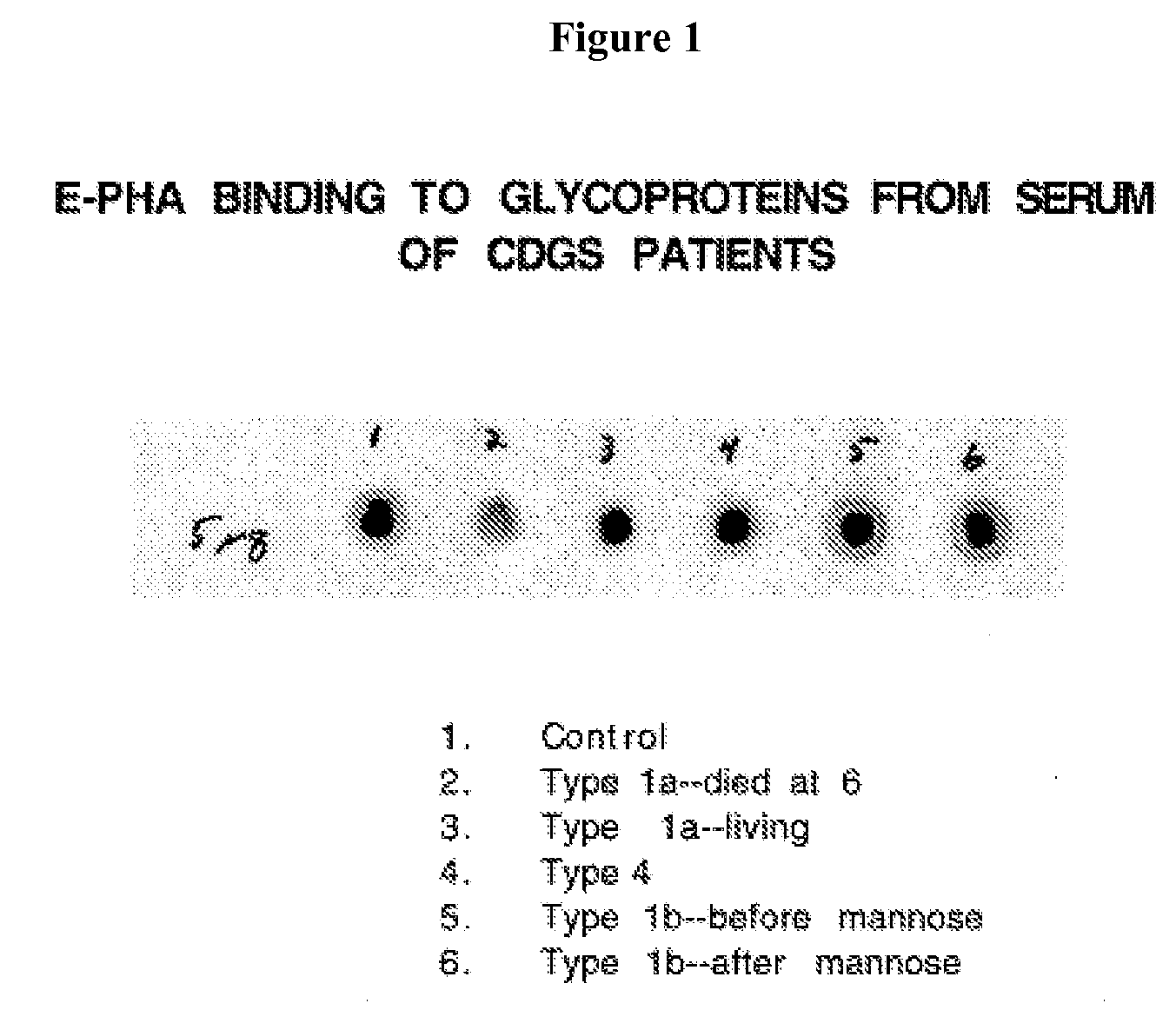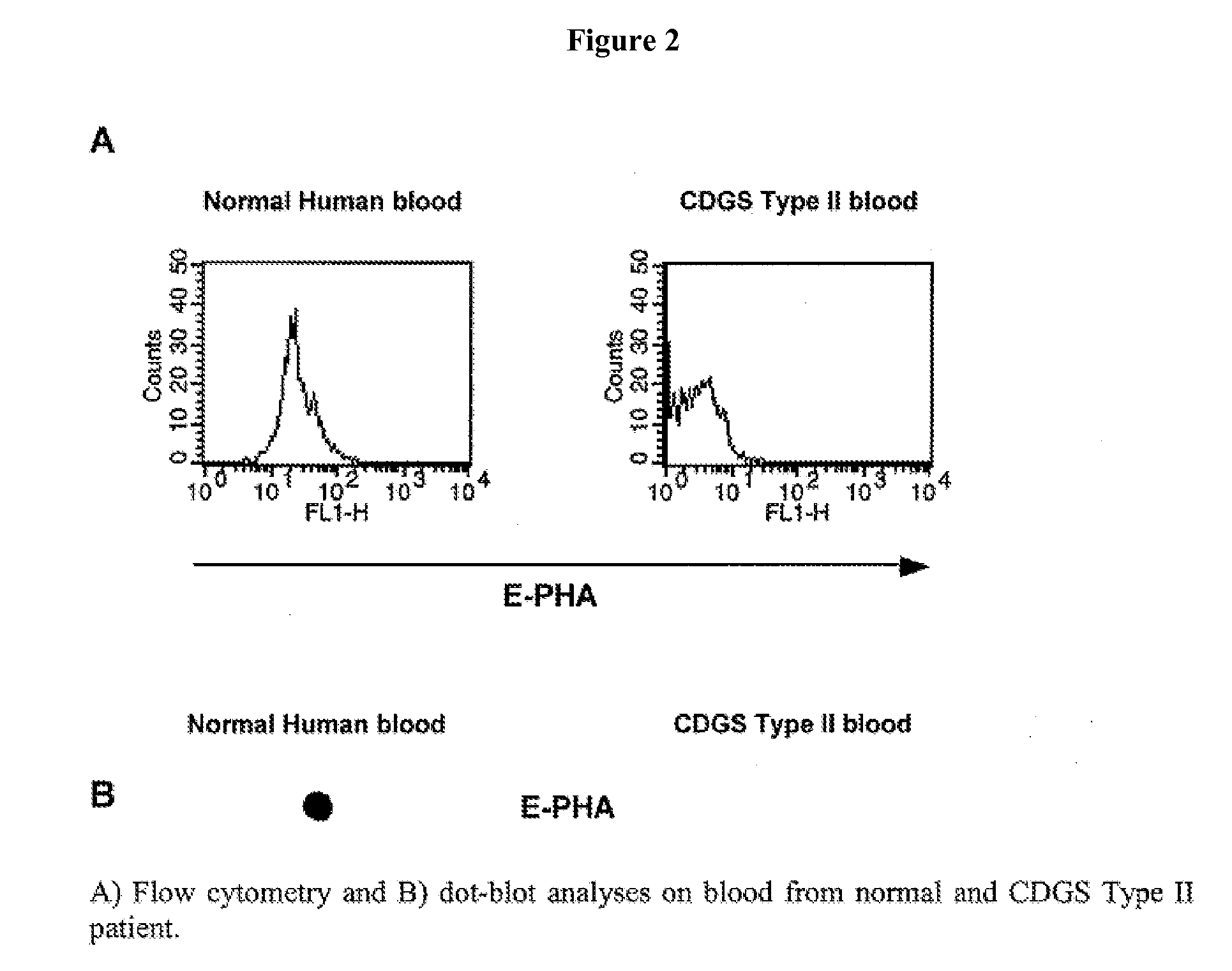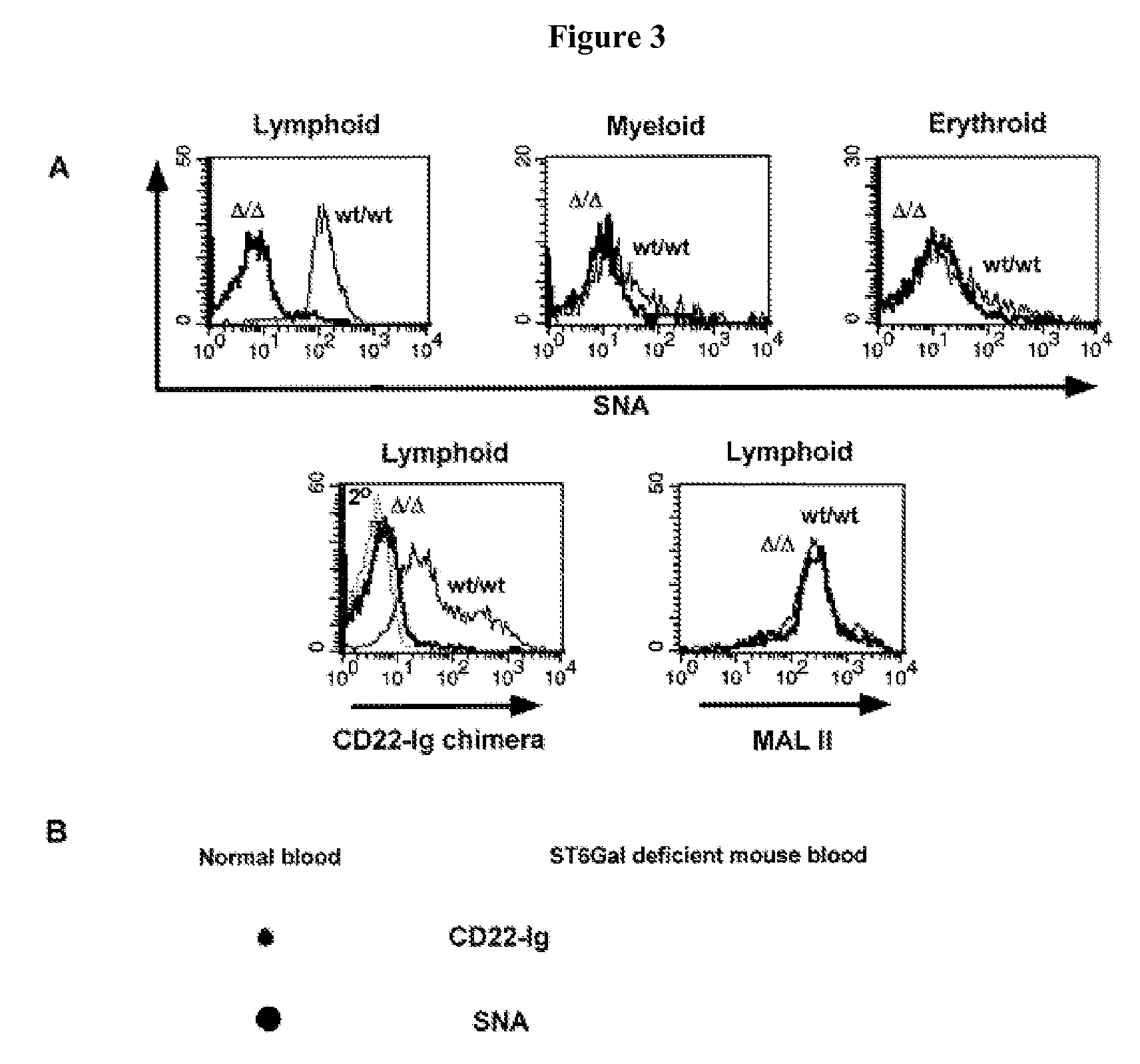Diagnosis of human glycosylation disorders
a glycosylation disorder and human technology, applied in the field of genetically transmitted diseases, can solve the problems of hampered discovery and treatment of additional diseases associated with glycosylation deficiencies, lack of efficient and effective diagnostic tests, and loss of an entire sugar chain
- Summary
- Abstract
- Description
- Claims
- Application Information
AI Technical Summary
Benefits of technology
Problems solved by technology
Method used
Image
Examples
example 1
Diagnosis of Carbohydrate Deficient Glycoprotein Syndrome Type II
[0145] Carbohydrate Deficient Glycoprotein Syndrome (CDGS) Type II is an autosomal recessive disease that was first discovered in a test for alcoholism. Two patients have been reported since the syndrome was first molecularly defined as two separate point mutations in the MGAT2 gene, which encodes GlcNAc transferase II. The disease is characterized by severe locomotor dysfunction, dysmorphic facial features, mental retardation, epilepsy, kyphoscoliosis, osteopenia, ventral septal defects of the heart, volvulus and obstipation, as well as multiple infections.
[0146] A knockout mouse model was made in which the MGAT2 gene is defective. Most homozygotes died within the first week after birth. Survivors were obtained that exhibited phenotypes that match the human disorder. Plasma, blood, and serum from the knockout mouse was tested to identify potential diagnostic reagents. The lectin E-PHA was found to bind to blood, pla...
example 2
Diagnosis of Core 2 GlcNAc Transferase Deficiency
[0148] This Example describes the development of a diagnostic method for detecting Core 2 GlcNAc transferase deficiency. The Golgi enzyme core 2 β-1,6-N-acetylglucosaminyltransferase (C2 GlcNAcT) is generally involved in the synthesis of mammalian serine / threonine-linked oligosaccharides (O-glycans) (FIG. 8). Core 2 O-glycans have been hypothesized to be essential for mucin production and selectin ligand biosynthesis.
[0149] This Example demonstrates that mice lacking C2 GlcNAcT exhibit a restricted phenotype with neutrophilia and a partial deficiency of selectin ligands. Loss of core 2 oligosaccharides reduces neutrophil rolling on substrata bearing E-, L- and P-selectins and neutrophil recruitment to sites of inflammation. However, the diminished presence of L-selectin ligands on lymph node high endothelial venules does not affect lymphocyte homing. These studies indicate that core 2 oligosaccharide biosynthesis segregates the phys...
example 3
Diagnosis of CDA Type II / HEMPAS
[0193] This Example describes the diagnosis of CDA Type II / HEMPAS by detecting loss of E-PHA binding to red blood cells.
[0194] A transgenic mouse deficient in α-mannosidase-II was obtained. These mice exhibit a dyserythropoietic anemia similar to that observed in CDA Type II / HEMPAS. Only erythroid cells were affected with the deficiency in glycosylation, as all other cell types use an alternative pathway that does not involve α-mannosidase-II.
[0195]α-mannosidase-II deficiency was diagnosed by observing a severe reduction in E-PHA binding to whole blood, but not usually in plasma or serum. Increased tomato lectin reactivity (binds to polylactosamines) was also diagnostic, and was not found in CDGS Type II.
PUM
| Property | Measurement | Unit |
|---|---|---|
| pH | aaaaa | aaaaa |
| volume | aaaaa | aaaaa |
| volume | aaaaa | aaaaa |
Abstract
Description
Claims
Application Information
 Login to View More
Login to View More - R&D
- Intellectual Property
- Life Sciences
- Materials
- Tech Scout
- Unparalleled Data Quality
- Higher Quality Content
- 60% Fewer Hallucinations
Browse by: Latest US Patents, China's latest patents, Technical Efficacy Thesaurus, Application Domain, Technology Topic, Popular Technical Reports.
© 2025 PatSnap. All rights reserved.Legal|Privacy policy|Modern Slavery Act Transparency Statement|Sitemap|About US| Contact US: help@patsnap.com



